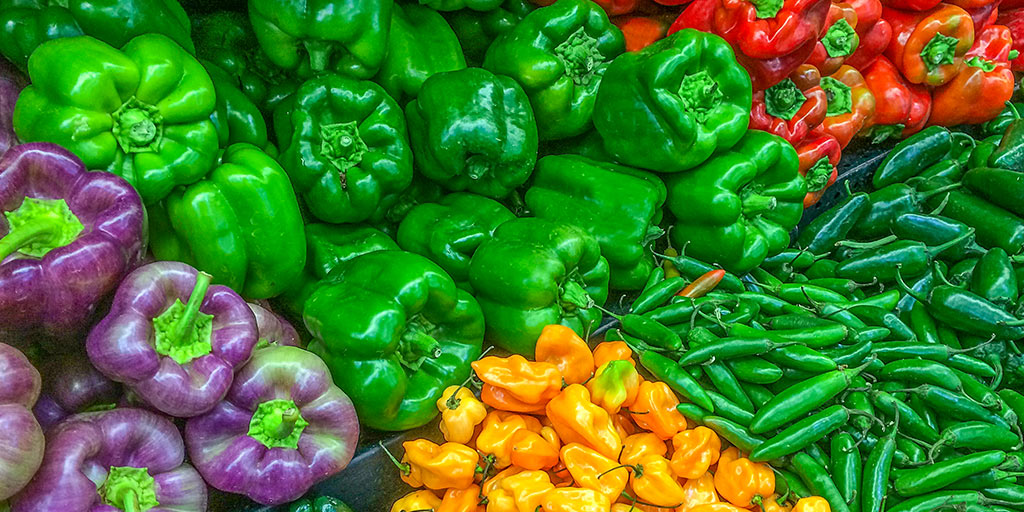Stepping into the world of pepper gardening offers a rewarding journey filled with vibrant plants and delicious produce. Understanding the taxonomy, cultivation techniques, and potential challenges of pepper cultivation is essential for a successful harvest. Explore the wonders of growing peppers with our comprehensive guide. Dive into the genus, etymology, cultivation, and more!
Understanding Peppers
Peppers are popular vegetables prized for their crisp texture and range of flavors, from sweet to spicy. These versatile plants can be enjoyed raw, cooked, or stuffed, making them a staple in many kitchens. Most gardeners plant peppers in the spring and enjoy a continuous harvest throughout the growing season.
Taxonomy of Peppers
Peppers, scientifically termed Capsicum annuum, belong to the Solanaceae family. This family also includes tomatoes, eggplants, and potatoes. Peppers come in various shapes, sizes, and colors, including green, red, yellow, orange, and even purple, depending on the variety. Understanding the taxonomy of peppers helps gardeners appreciate the diversity and potential of this beloved vegetable.
Etymology
The term “pepper” has a rich linguistic history. It derives from the Old English “pipor,” which in turn comes from the Latin “piper” and the Greek “piperi.” This term was initially used for the unrelated black pepper (Piper nigrum) and was later adopted for the capsicum species due to their similar spicy characteristics. The diverse linguistic origins of “pepper” highlight its widespread use and cultural significance.
| Botanical Classification | Horticultural Divisions |
|---|---|
| Family: Solanaceae | Bell Pepper |
| Genus: Capsicum | Sweet Pepper |
| Species: Capsicum annuum | Hot Pepper |
Peppers: Sweet vs. Spicy
Peppers are often categorized into sweet and spicy varieties. Sweet peppers, such as bell peppers, have a mild, sweet flavor and are commonly used in salads, stir-fries, and stuffed dishes. Spicy peppers, like jalapeños, habaneros, and cayenne, offer a range of heat levels and are used to add a kick to salsas, sauces, and various dishes. This distinction is important for culinary uses and harvesting decisions.
Understanding Pepper Varieties
Understanding the various varieties of peppers opens doors to a world of culinary exploration and gardening experimentation. Each variety offers unique flavor profiles, growth habits, and culinary uses.
- Bell Pepper Known for its blocky shape and thick walls, bell pepper is a classic variety. It offers a sweet, mild flavor and is ideal for stuffing, salads, and cooking.
- Jalapeño Jalapeño peppers produce medium-sized, cylindrical fruits with a moderate heat level. They are excellent for salsas, pickling, and adding a spicy kick to various dishes.
- Habanero Habanero peppers are small, lantern-shaped fruits known for their intense heat and fruity flavor. They are commonly used in hot sauces, salsas, and marinades.
- Cubanelle Also known as the Cuban pepper, Cubanelle peppers have a thinner skin and a milder flavor compared to other sweet peppers. They are excellent for frying and stuffing.
How to Plant Peppers
Growing peppers offers various methods, including seeds, transplants, or cuttings, each with its advantages. Pepper seeds are cost-effective and straightforward to cultivate, making them the preferred choice for many gardeners. Transplants, though pricier, offer a quick start to pepper cultivation.
How to Grow Peppers
Peppers are relatively easy to grow with the right care and conditions. Proper sunlight, soil, and watering are essential for healthy plants.
Outdoors
Peppers thrive in full sun, requiring at least six hours of sunlight daily for optimal growth. Ensure well-draining soil with good organic matter content and aim for a pH level between 6.0 and 6.8. Keep the soil consistently moist but not waterlogged, as peppers prefer slightly moist conditions. Fertilize with a balanced fertilizer every four to six weeks to encourage healthy growth. Be vigilant for pests and diseases, and use organic methods for control.
Indoors
Growing peppers indoors offers a convenient solution for gardeners lacking outdoor space or contending with inclement weather. Opt for a sunny windowsill or a spot with at least six hours of direct sunlight daily, supplementing with grow lights if necessary. Ensure well-draining soil in a pot with drainage holes and maintain consistent moisture levels. Regular watering and fertilization with a liquid fish emulsion or a pepper-specific fertilizer can support the plant’s nutrient needs.
Pepper Lifespan and Garden Planning
Peppers are warm-season plants that thrive in temperatures between 70°F and 85°F. Gardeners must plan for successive plantings or staggered sowings to ensure a continuous harvest throughout the growing season. By strategically replanting peppers every few weeks, gardeners can maintain a steady supply of fresh peppers, prolonging their harvest and maximizing the plant’s culinary potential.
Harvesting Peppers
Harvesting peppers at the right time is crucial for maximizing flavor and freshness. Typically, peppers are ready for harvest when they reach a full, firm size and have a glossy appearance. To harvest, use a sharp knife or scissors to cut the peppers from the plant, leaving a short stem attached. For optimal flavor, harvest peppers in the morning when their essential oils are most concentrated. To store harvested peppers, rinse them in cold water, pat them dry, and store them in the refrigerator. Properly stored, peppers can stay fresh for up to two weeks.
Fun Facts About Peppers
Peppers have a fascinating history and unique characteristics that any gardener would appreciate.
- Ancient Roots: Peppers have been cultivated for thousands of years, with origins tracing back to Central and South America.
- Nutritional Benefits: Peppers are rich in vitamins A, C, and K, as well as essential minerals like potassium and folate. They are low in calories and high in fiber, making them a healthy addition to any diet.
- Culinary Uses: Peppers are incredibly versatile and can be used in a variety of dishes, including salads, stir-fries, pizzas, and more. They add a refreshing crunch and mild flavor to many recipes.
- Pests and Diseases: Peppers can be affected by common pests like aphids and diseases such as bacterial spot. Organic methods like introducing beneficial insects and using neem oil can help control these issues.
Conclusion
Peppers’ journey from seed to plate embodies the essence of gastronomic exploration and cultural exchange. Their vibrant colors and crisp texture serve as a testament to the ingenuity of cooks and the resilience of nature. Whether gracing the tables of home kitchens or gourmet restaurants, peppers transcend borders and unite palates in a shared appreciation for their unique flavors and versatility. As we cultivate, harvest, and savor this beloved vegetable, let us cherish the connections it fosters and the memories it evokes, reminding us of the beauty found in the simplest of culinary delights.
We hope this guide has inspired you to try growing peppers yourself. Add fresh flavors to your meals with homegrown peppers from your garden.
Be sure to share your pepper-growing experience and favorite recipes with us in the comments below. We’d love to hear from you!

